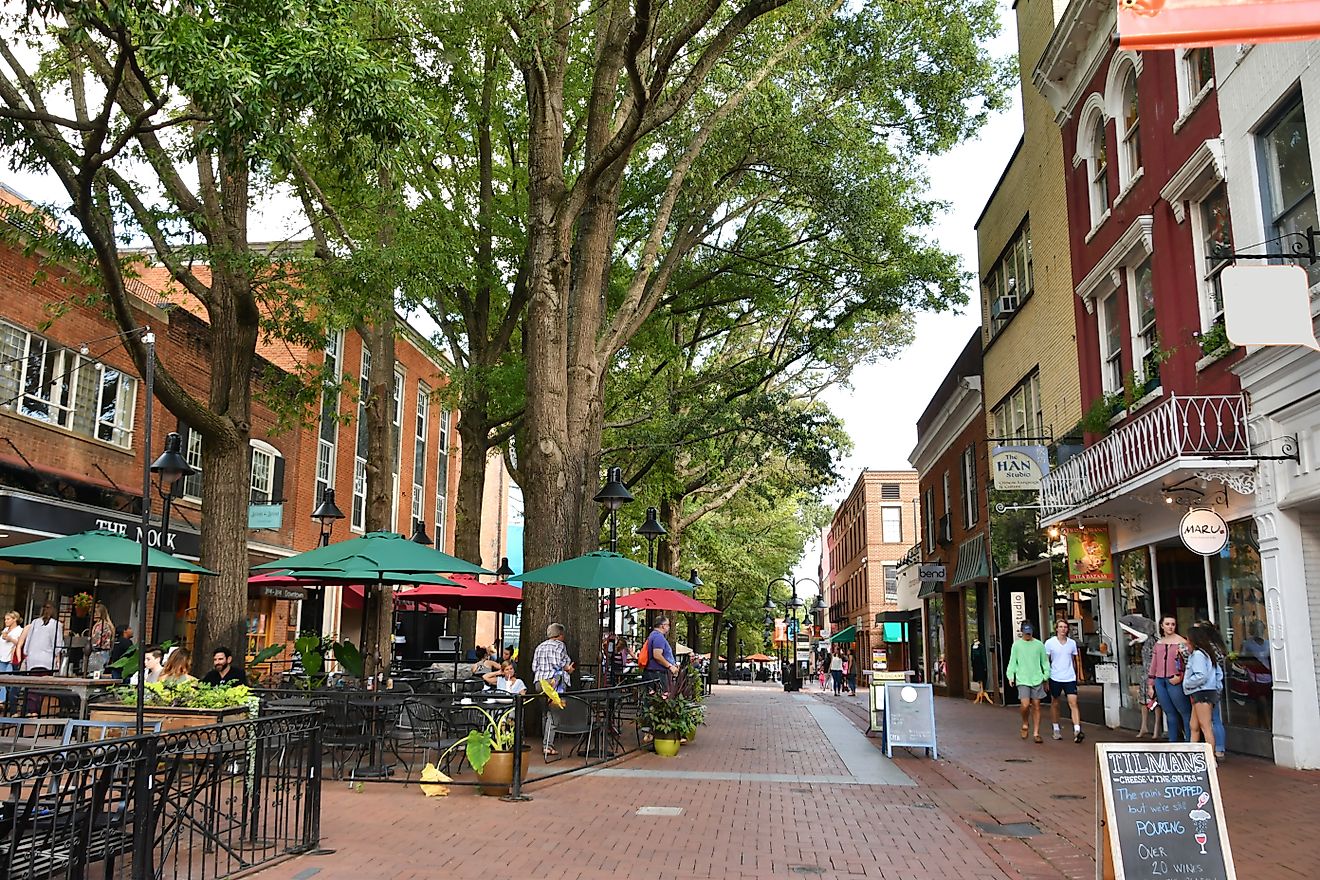
8 Breathtaking Towns To Visit In Iowa
Iowa, a state located in the Midwestern United States, is bordered by the Mississippi River to the east and the Missouri River to the west. It is characterized by its plains and cornfields, often referred to as part of America's "Corn Belt." Iowa's economy is heavily driven by agriculture, manufacturing, and biotechnology. The state is home to numerous small towns that are integral to its identity. The natural beauty of these eight breathtaking towns, including vast farmlands and accessible natural reserves, adds to their idyllic and peaceful quality.
Pella
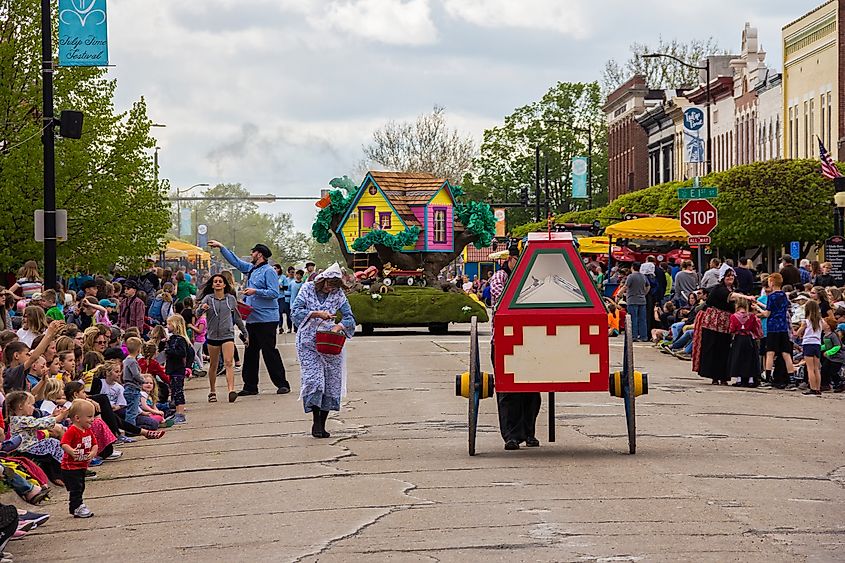
Pella, Iowa, was founded in 1847 by Dutch immigrants led by Dominie Hendrik Pieter Scholte. The settlers named the town Pella, meaning "City of Refuge," to honor their escape from religious persecution in the Netherlands. Located in Marion County, the town's layout and architecture heavily reflect its Dutch origins, with buildings featuring historical Dutch design and the streets often adorned with tulips. Pella is set against the backdrop of the rolling plains of Iowa.
The Vermeer Windmill & Historical Village has a fully functioning windmill, the tallest working windmill in the United States. The surrounding historical village recreates 19th-century Dutch life with a collection of buildings and artifacts. The Tulip Toren stands in the town square and is particularly notable during the Tulip Time festival, when it becomes the center of activities celebrating Dutch culture. Just outside the town, Lake Red Rock provides opportunities for outdoor recreation. As Iowa’s largest lake, it offers boating, fishing, and hiking facilities, with several trails that wind around the landscape.
Decorah

Decorah, Iowa, is a town located in the northeastern part of the state within the driftless area, a region known for its topography that escaped glaciation during the last ice age. This results in a landscape of rolling hills, rugged bluffs, and fertile valleys. Founded in the mid-19th century, Decorah developed a strong Norwegian presence, as it became a primary settlement area for Norwegian immigrants. The town's heritage is celebrated and preserved.
The Vesterheim Norwegian-American Museum is one of the largest museums dedicated to a single immigrant group in the United States and has a collection of artifacts and exhibits that explore the Norwegian-American experience. The Ice Cave in Decorah is one of the town's natural marvels, where rare ice formations persist inside the cave even during the summer months. Lastly, Dunning's Spring Park is a locale that has a 200-foot waterfall and surrounding woodland. The park is for hiking, nature watching, and picnics.
Amana

Amana, Iowa, is part of the Amana Colonies, a group of seven villages built by German Pietists in the mid-19th century who immigrated to escape religious persecution. Located in eastern Iowa, the Amana Colonies are distinctive for their communal lifestyle, which was maintained until the mid-20th century. This communal system included shared ownership of resources and goods, with all residents working for the community and, in turn, receiving housing, medical care, meals, and necessities.
The Amana Heritage Museum looks at the history of the Amana Colonies through artifacts, photographs, and displays that explain the origins, daily life, and unique communal aspects of the villages. The High Amana General Store continues to operate much as it did in the 1850s—it is a historical shopping experience with an array of traditional goods and handmade items that reflect the craftsmanship and cultural heritage of the community. For nature enthusiasts, the Amana Colonies Nature Trail is a setting to enjoy the local flora and fauna. The trail underscores the Amana Colonies’ commitment to preservation and community.
Mount Vernon
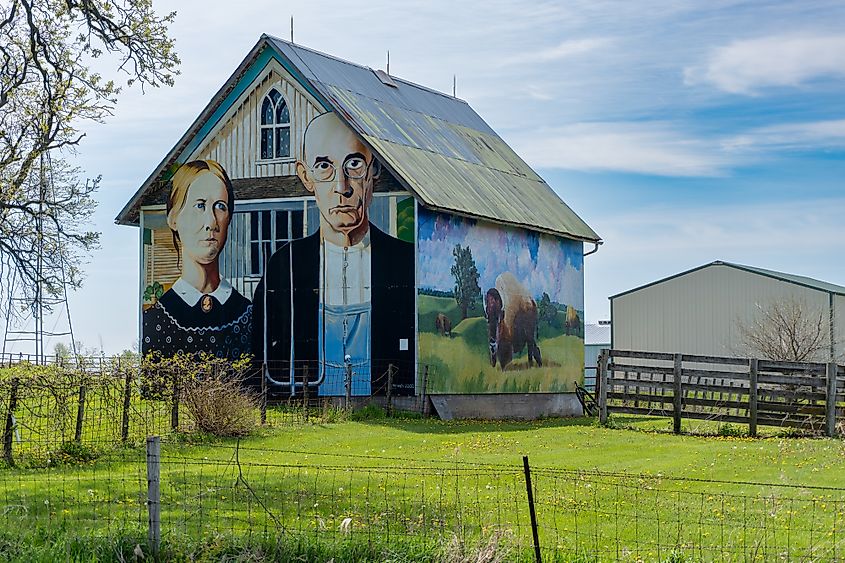
Mount Vernon, Iowa, is a small town located in Linn County. Established in the 1840s, the town is closely intertwined with the development of Cornell College, which was founded in 1853 and has played a central role in the community's identity. Mount Vernon's geographical setting is characterized by its location near the Cedar River, with landscapes that include rolling hills and rich vegetation.
Palisades-Kepler State Park is one of the area's top attractions for outdoor activities. The park has hiking trails that wind through landscapes of the Cedar River and dramatic limestone bluffs. It's also a spot for river fishing and picnicking. The Cornell College Campus is another must-visit, renowned for its campus and historic buildings, particularly the King Chapel. The campus has well-maintained grounds that are ideal for a leisurely walk or a guided tour to appreciate the college’s history. The Ash Park Historic District in Mount Vernon lets visitors step back in time, with an array of historic homes and buildings that show the town’s architectural evolution. This district has walking tours.
Winterset

Winterset, Iowa, is famously recognized as the heart of the region known for the iconic Covered Bridges of Madison County, which were popularized by the novel and movie of the same name. The town's geography has hills and agricultural land, complementing its historic architecture and small-town charm. Winterset also boasts a strong connection to American cinema, being the birthplace of legendary actor John Wayne.
Exploring the Covered Bridges of Madison County is a must. These bridges, including the Roseman and Holliwell bridges, are not only historically significant but also offer settings for photography and scenic drives. Each bridge tells a story of 19th-century engineering and community importance. The John Wayne Birthplace Museum is another attraction. It looks at the life and career of John Wayne, with a collection of personal memorabilia, film costumes, and interactive exhibits about his films. Additionally, Clark Tower in Winterset City Park is an opportunity for a short hike leading to a stone tower that has views of the surrounding countryside. The tower was built in the 1920s.
McGregor
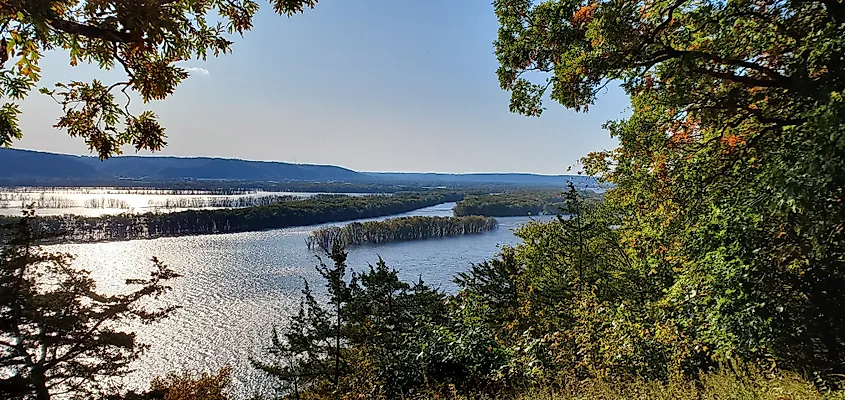
McGregor, Iowa, is a river town along the banks of the Mississippi River. Founded in the mid-19th century as a hub for the river trade, McGregor flourished as a bustling port and market town, attracting a diverse array of settlers and entrepreneurs. The town's architecture reflects this rich history, with well-preserved buildings that showcase Victorian and other period styles.
Pikes Peak State Park has views from 500-foot limestone bluffs overlooking the confluence of the Mississippi and Wisconsin Rivers. The park has numerous hiking trails, picnic areas, and photo opportunities. Effigy Mounds National Monument is another must-visit. The park preserves more than 200 prehistoric mounds built in the shapes of animals and geometric figures, which are believed to have been used for ceremonial and burial purposes. Spook Cave is an adventurous experience with guided boat tours through a water-filled limestone cave. This tour allows visitors to explore the underground formations.
Boone

Boone, Iowa, is distinguished by its deep roots in the railroad industry. Founded in the 1860s, Boone developed rapidly with the expansion of the railroad. The town was named after Captain Nathan Boone, son of the famous American pioneer Daniel Boone. Geographically, Boone is set against the backdrop of Iowa’s plains and is bisected by the Des Moines River.
Ledges State Park is one of Iowa’s most popular state parks and is well-known for its dramatic sandstone ledges that rise along Pea's Creek. The park has hiking trails that navigate through the geological formations. The Boone & Scenic Valley Railroad is an opportunity to step back in time with a nostalgic train ride that showcases the landscapes of the Des Moines River Valley. The railroad offers various themed excursions, including dinner trains and fall foliage tours. The Kate Shelley High Bridge, named after a local heroine who famously alerted train dispatchers to a bridge washout, is a feat of engineering. It is one of the highest double-track railroad bridges in the United States.
Orange City
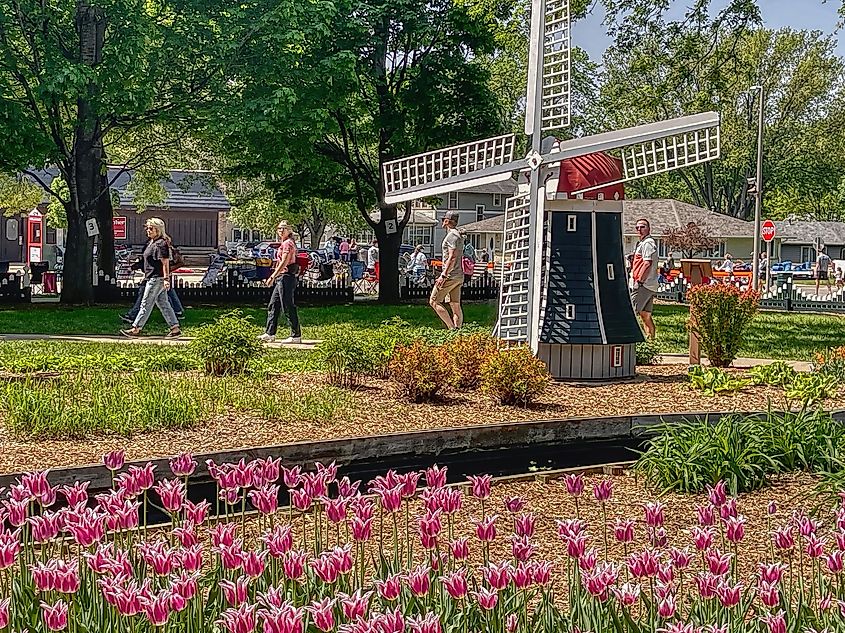
Orange City, Iowa, is another community known for its strong Dutch heritage. Founded in 1870 by settlers from Pella, Iowa, the town was named after the Dutch Royal House of Orange-Nassau, underscoring the residents' roots and pride in their Dutch background. The town has well-preserved 19th-century architecture and landscaped areas that mirror European villages.
Orange City Prairie is a preserved natural area on the outskirts of the town—an example of native Iowa prairie landscapes. This area is ideal for nature walks. Dutch Heritage Boosters Windmill Park is an attraction for those interested in Dutch culture and history. The park has a functional windmill and several historical displays that provide insight into the lives and traditions of the town’s Dutch settlers. Northwestern College Green has a well-maintained campus that includes historic buildings and gardens. The campus is open for strolls.
In Summary
Iowa's breathtaking small towns are where historical preservation meets natural beauty. Towns like Pella and Decorah are examples of this synergy. Pella, with its Dutch heritage and colorful tulip festivals, has a cultural experience, while Decorah's Nordic influences and scenic surroundings, highlighted by the Ice Cave and Dunning's Spring Park, make it a standout for those seeking both cultural depth and outdoor activities. These eight towns exemplify the serene quality of Iowa's beautiful small towns.







